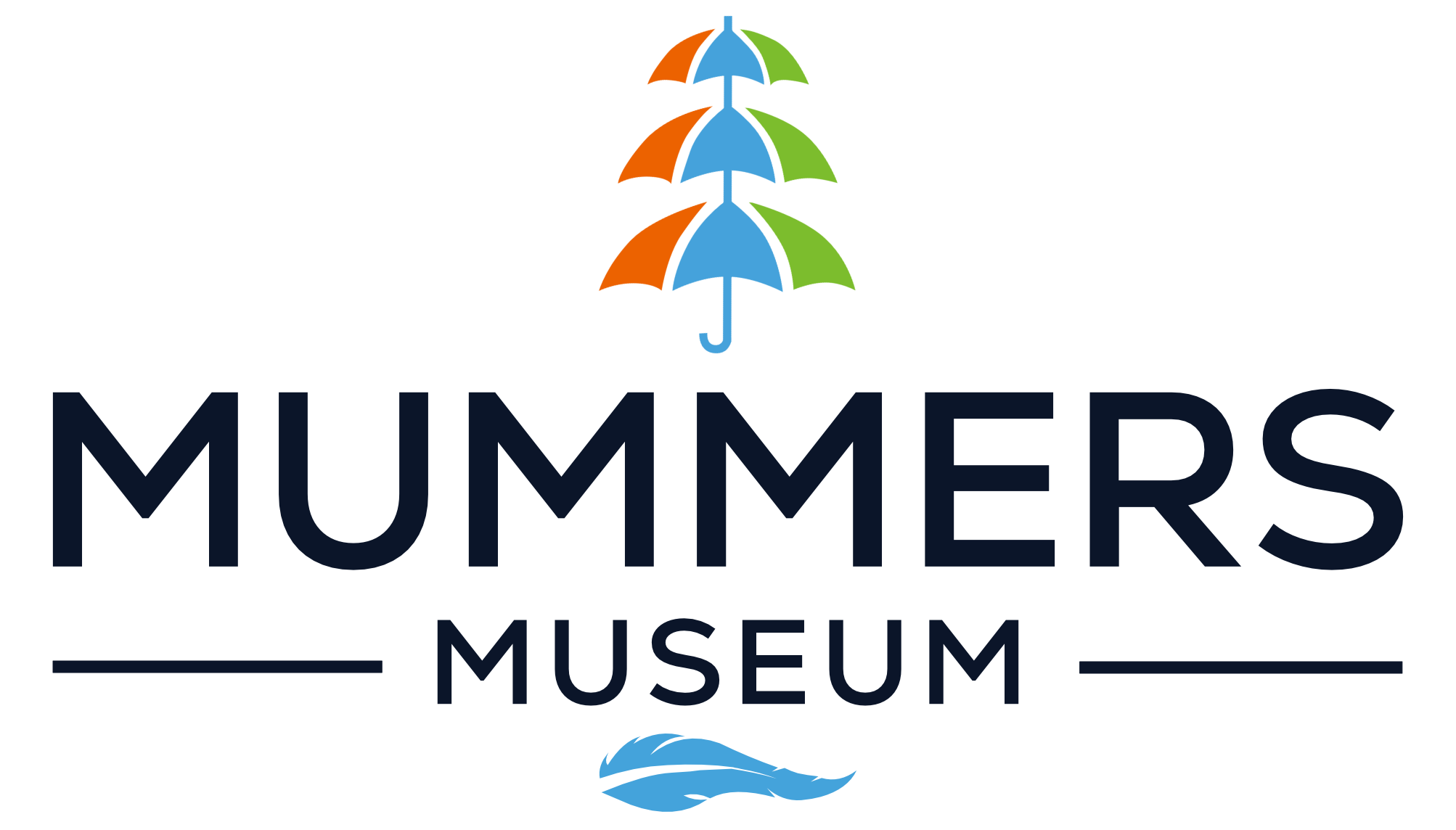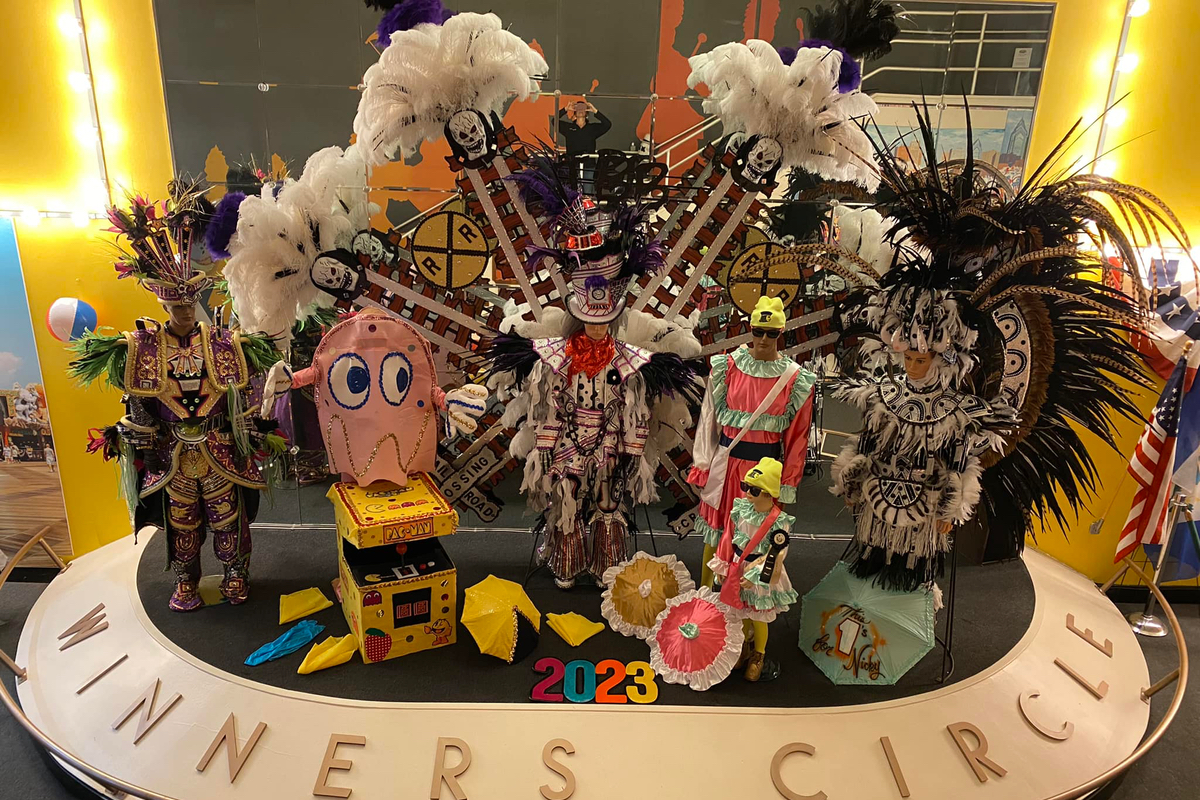
"Mummers are about celebration, fun, and family. They value tradition and community. Mummers can be musical, satirical or even a little ridiculous, but they are always colorful."
Mummers are about celebration, fun, and family. They value tradition and community. Mummers can be musical, satirical or even a little ridiculous, but they are always colorful.
Mummers in Philadelphia are costumed citizens celebrating the New Year with family and friends. They belong to clubs in one of 5 Divisions: The Comic, The Fancy, the Wench Brigade, the String Band and the Fancy Brigade Divisions. In Philadelphia this has developed into the grandest of Mummers traditions, the annual Mummers Parade. Ten thousand participants and hundreds of thousands of parade viewers take to the streets and sidewalks or view on television on New Year’s Day.
Golden Slippers are the iconic image of Mummery. The unofficial theme song of the Mummers is “Oh Dem Golden Slippers,” composed by James Bland in 1879.
The Philadelphia Mummers Parade is the oldest continuous folk parade in the United States. The first formal, city-sponsored parade dates to 1901. But Mummery in Philadelphia began long before that. Mummers can be found throughout recorded history in ancient Egypt, in Greece, in Europe and elsewhere in the world. The Feast of Saturnalia, the British Mummer Play, and the Florentine Carnival influenced today’s Mummery. When European immigrants from Scandanavia, from Britain, and other parts of Europe began arriving in the 17th Century, they brought their Mummer traditions with them. Whether on 2nd Christmas (December 26th) or eventually on New Year’s Day, individuals, families, and friends would “Mum” through their neighborhood. This might involve a skit or a poem, sometimes making fun of the ruling class, and often asking for food or drink. The most famous Mummers poem reads:
HERE WE STAND BEFORE YOUR DOOR, AS WE STOOD THE YEAR BEFORE; GIVE US WHISKY, GIVE US GIN, OPEN THE DOOR AND LET US IN.
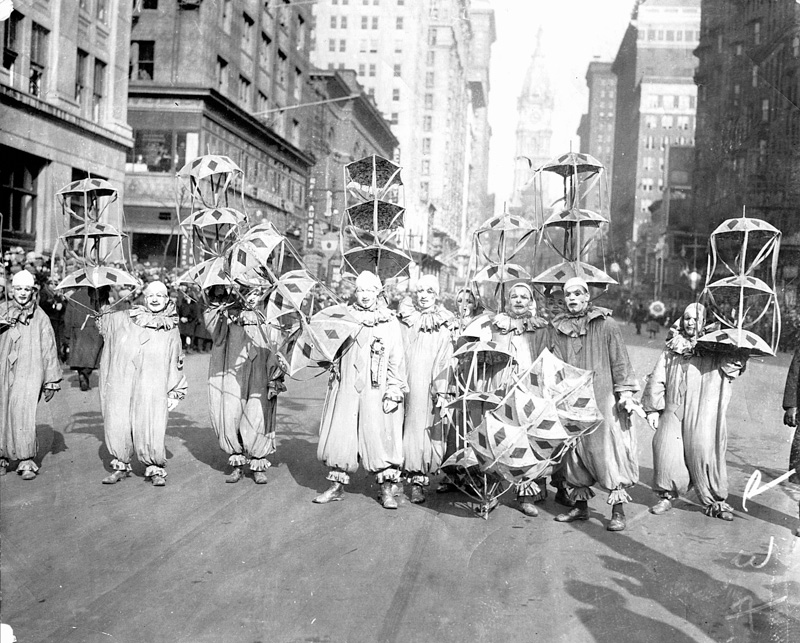
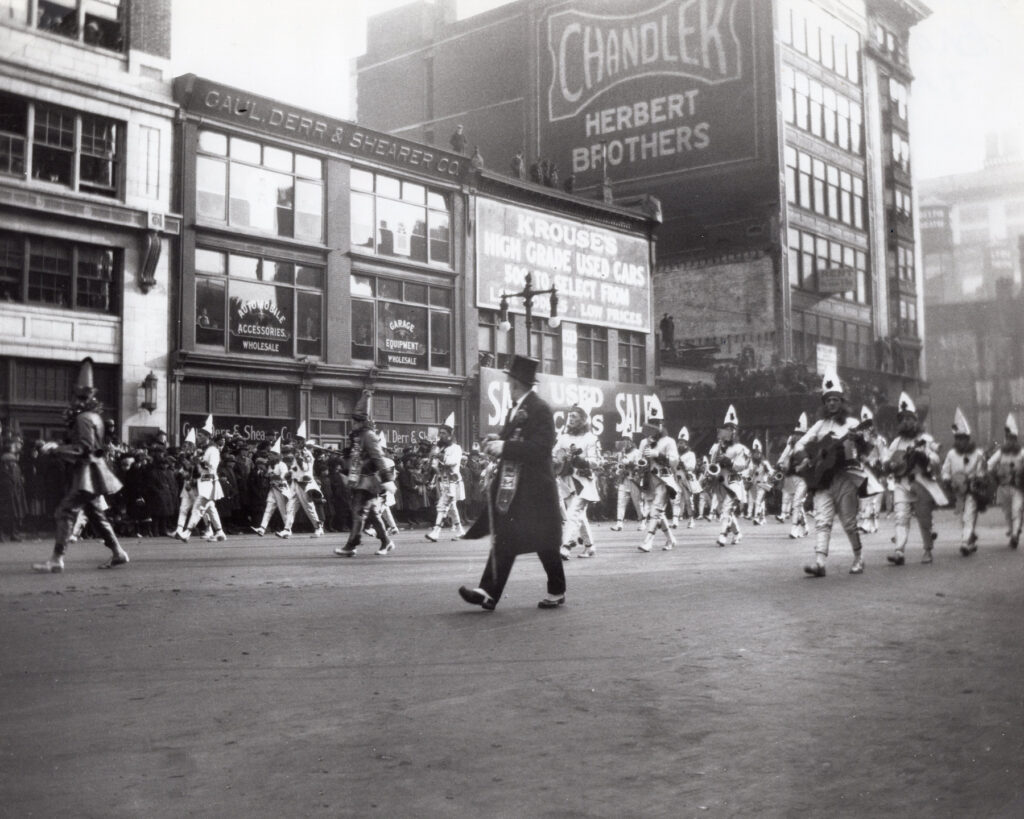
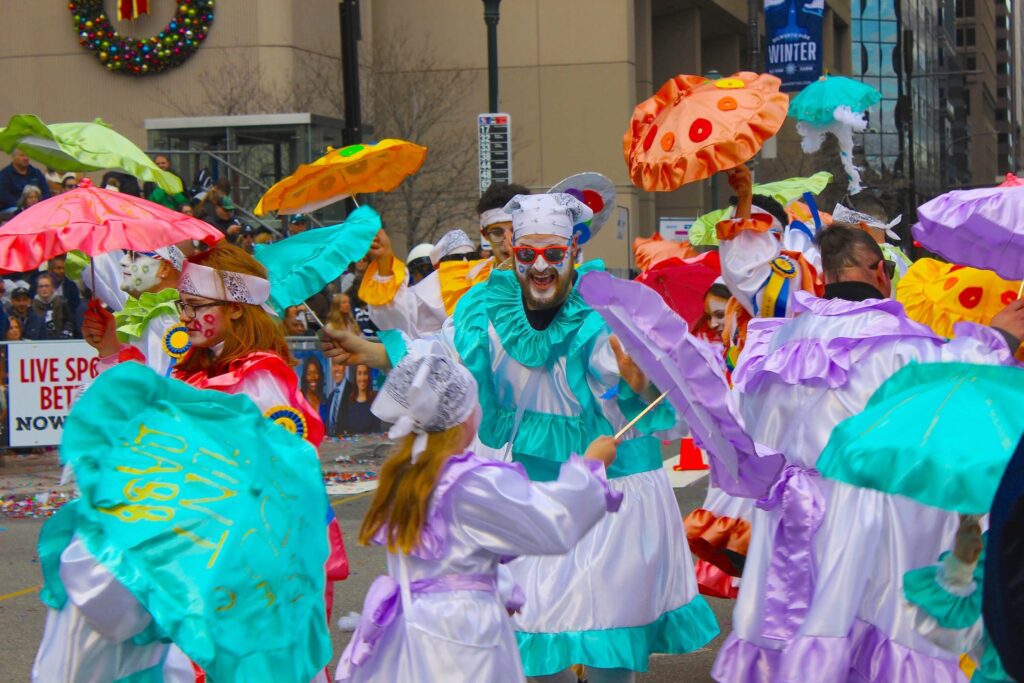
General History
The Mummers Museum opened in 1976 as part of Philadelphia’s celebration of America’s Bicentennial. The Museum is dedicated to celebrating the tradition of Mummery in Philadelphia. Inside are costumes, oral histories, video and audio archives, and even an exhibit to teach anyone how to “strut.”
The word Mummer can be traced to Greek mythology. Momus was the personification of satire, mockery, and censure. Mummer can also be connected to the late Middle English word mommer and the Old French word momeur. Each relates to miming, masking, and folk play.
The British during the Revolutionary War contributed to Mummer inspiration with an extravagant, some would say Mummer-like, farewell party for William General Howe in 1778. Later, President George Washington, living in Philadelphia, continued the tradition of greeting friends in the week leading up to New Year’s Day. Since part of the Mummer tradition is to party and to poke fun, Mummery has not been universally embraced throughout Philadelphia history. For several decades in the 1800s, masquerading was even banned. But, Mummery continued and there are no known arrests for violating the ordinance.
Mummers kept on celebrating.
Some things have changed. Among them, no firearms are allowed in the parade. In the 17th and 18th Centuries, many citizens owned guns and would fire them into the air as part of the Mummers celebration. That’s why the Museum is officially called the New Year’s Shooters and Mummers Museum. As this type of celebration grew more dangerous, the firearms were left at home.
While Mummers can be found throughout the city and suburbs of Philadelphia, the heart of the Mummers is in South Philadelphia, along Second Street and Third Street, in neighborhoods called Pennsport and Whitman. Today’s Mummers are men and women from all walks of life, but strong Irish, German, Italian, Polish, and Roman Catholic connections exist throughout the Mummers. Many graduated from the same high schools. Some trace their family’s involvement back generations. Occupations such as longshoremen and firefighters have solid Mummer ties. Mummery has strong working-class roots and symbolism.
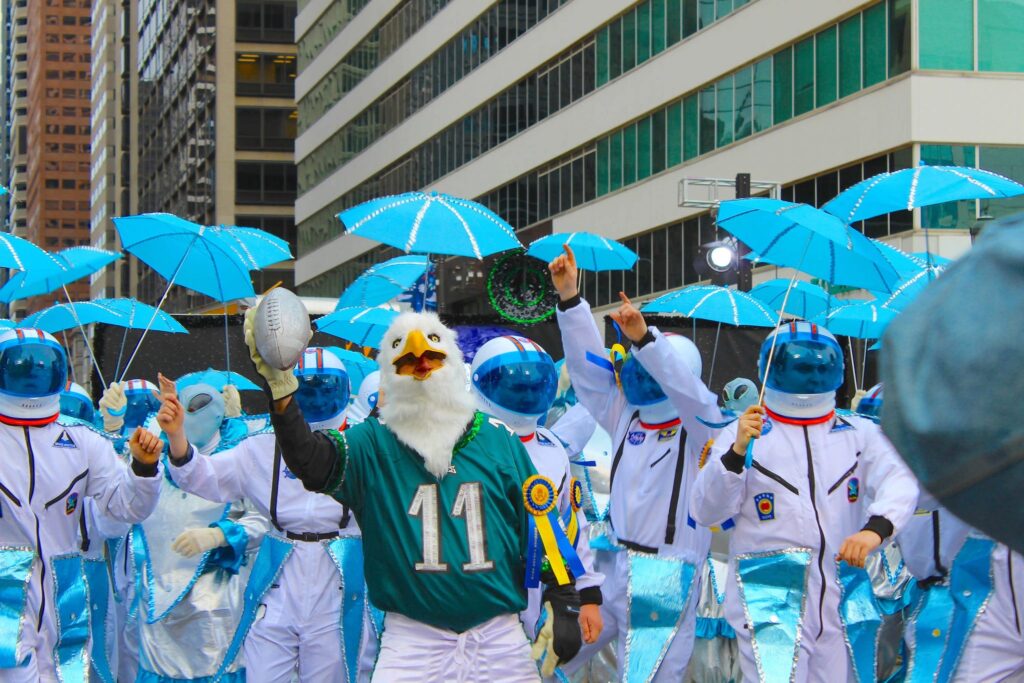
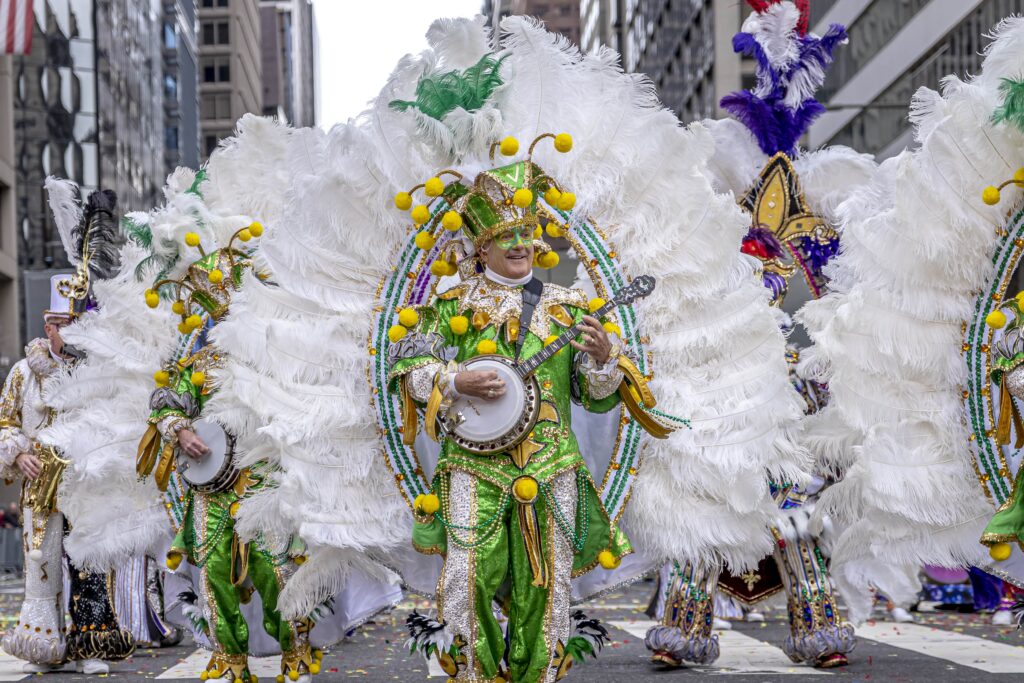
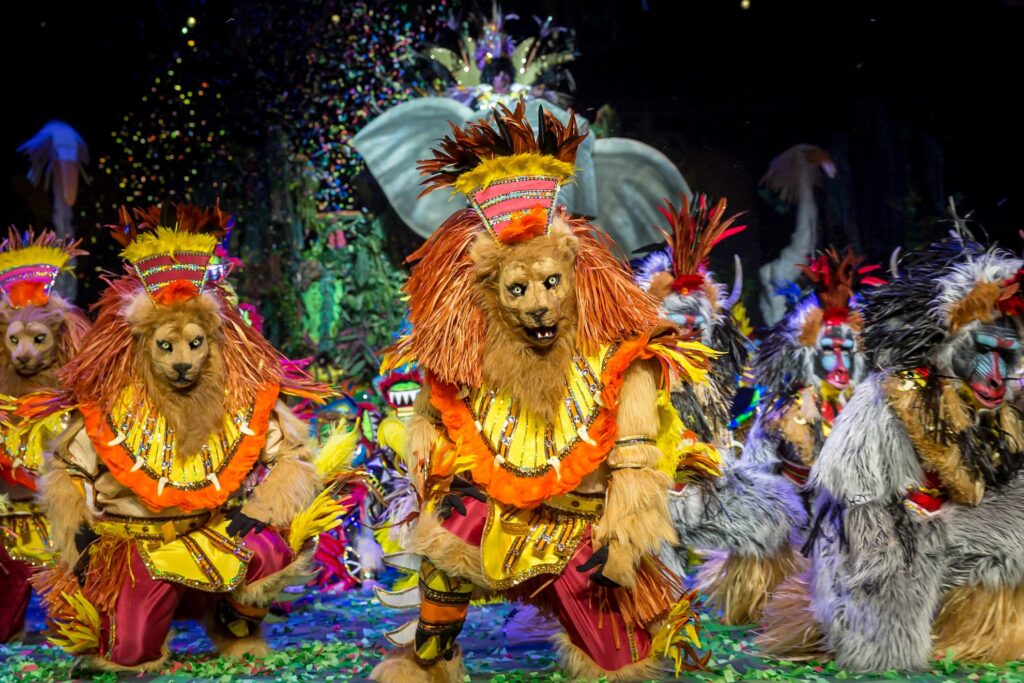
The earliest Mummers were Comics and Fancies. Some masqueraded as “Dudes” or “Wenches.” Comics may be individual or group performers and smaller wench brigades. These performers operate within large “mother” clubs and flow along the parade route with humor ranging from the sarcastic to slapstick. Political and pop-culture references are common. Many children are involved in this division.
The Fancies were just what the word describes, using fancier, more ornate costuming. In the mid-1900s, a Fancy Captain’s cape could be a block long and supported by many “pages.” The Fancies have had their own categories of judging such as “Handsome Costume,” “Handsome Trim,” “King Clown,” “King Jockey,” and “Fancy Trio.”
The Wench Brigade Division contains the largest of the wench brigades, Mummers dressed in traditional Mummers garb of a dress, matching hat or scarf, bloomers, a Mummers parasol or umbrella, sometimes multi-tiered, and of course, the Golden Slippers.
The String Bands trace their heritage to the late 1800’s but rapidly grew in the first part of the 20th Century. While they have evolved over the years into more theatrical productions with props, along with their instrumentation, one rule has remained unchanged: No brass instruments are allowed. Saxophones, banjos, and percussion dominate the bands.
The Fancy Brigades were formed from the Fancy Division. The Brigades developed more “Broadway-like” energetic performances involving dozens of club members and perform their shows inside the Pennsylvania Convention Center on New Year’s Day.
While New Year’s Day is the grand public moment for Mummers, it just begins to describe what Mummery means to its members, to their neighborhoods and to the City of Philadelphia. Mummery is part of the economic and social fabric of the city. Members are goodwill ambassadors around the world and are always entertaining the sick, the elderly, and children and raising money for numerous good causes.
